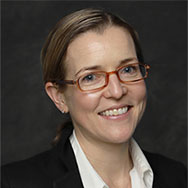Advocates for the disability community, the LGBTQ community, and people living in rural America spoke of ways to advance health equity through stronger anti-discrimination policies, better data collection, and improved awareness of the obstacles these communities face, during the Alliance for Health Policy’s Health Equity Summit last week.
The online panel discussion was sponsored by Kaiser Permanente, Anthem, the Pharmaceutical Research and Manufacturers of America (PhRMA), and several other stakeholder groups.
Discrimination Continues
Kara Ayers, PhD, associate director of the University of Cincinnati Center for Excellence and Developmental Disabilities, said that one of the most frustrating problems facing the disability community is that others fail to recognize how “ableism” impacts health outcomes.
Society tends to think that when people with disabilities have poor health, it’s “caused by or only by the disability itself,” but that’s far from the truth, Ayers said.
For example, some pregnant women with disabilities can’t find doctors to care for them because so many physicians say such care is beyond their scope of practice, and persons with disabilities in need of organ transplants continue to be sidelined by providers who claim a transplant “would not increase their quality of life,” Ayers explained.
“More often than not when quality of life is cited in healthcare, it hasn’t even been measured, but if it has been measured it’s rarely standardized and not informed by disability cultural competence,” she added.
‘Pathologizing’ Homosexuality
LGBTQ and transgender patients also endure discrimination, said Sean Cahill, PhD, director of health policy research at the Fenway Institute in Boston.
One in three LGBTQ Americans and three out of five transgender people experience discrimination in healthcare, making them less likely to access care in the future, said Cahill, citing a 2020 survey from the Center for American Progress.
Many older LGBTQ individuals, because of the ways their homosexuality was pathologized and viewed as a mental illness for decades, are also mistrustful of the medical community, Cahill added.
Being homosexual was considered a crime in all 50 states until the early 1960s, Cahill noted, adding that much of clinicians’ treatment for LGBTQ individuals therefore amounted to trying to “help them become heterosexual,” using, “problematic methods” including electroconvulsive therapy.
Because of those early life experiences, some LGBTQ individuals are more reticent in approaching medical professionals, Cahill said.
Access for Rural Americans
For individuals in rural areas, the major barrier to health equity isn’t so much discrimination as access, explained Nancy Dickey, MD, executive director of A&M Rural and Community Health Institute at Texas A&M Health Science Center in Bryan.
The “unprecedented rate” of hospital closures coupled with a shortage of providers has threatened care for rural Americans, who tend to be older and poorer and have more chronic health conditions, she explained. Many people delay care for their chronic conditions and even put off filling prescriptions because of how much driving time is required to reach a facility or pharmacy, she said.
“Even … in a relatively small population, the ability to have a facility, and the healthcare professionals that attracts, makes a difference between whether these people live or die, whether they control their chronic illnesses or not,” Dickey said.
COVID’s Impact on Subpopulations
The COVID-19 pandemic likely exacerbated the health challenges for all three of these communities, panelists said.
“I think the most frustrating and heartbreaking part was that we saw [the pandemic] coming, and we still couldn’t stop the preventable loss of those lives,” said Ayers, noting that a lot of people with disabilities live in institutions and congregate care settings, which made them especially vulnerable to the virus.
Despite the passage of the Americans With Disabilities Act in 1990 and the Supreme Court’s decision in Olmstead v. L.C., making living in a community setting rather than an institution a civil right, some 300,000 Americans with disabilities still live in nursing homes, group homes, intermediate care facilities, and other congregate settings.
“So we must build capacity in the community to move people out of those settings into their communities,” Ayers said.
In rural areas, even those that didn’t experience COVID surges, already short-staffed smaller hospitals saw employees leave to work in pandemic-ravaged cities and towns for higher pay. That rural hospitals also had to stop non-pandemic routine care and day surgeries also caused a number of rural hospitals to close, Dickey said.
As for the LGBTQ community, data from certain demographic surveys — including the CDC’s Behavioral Risk Factor Surveillance System survey — suggest that LGBTQ individuals are “probably more likely to contract … the novel coronavirus,” Cahill said.
LGBTQ individuals are twice as likely to work in frontline professions including food services, retail, education, and healthcare, he added.
They are also more likely to engage in risky behavior such as smoking and vaping and have high rates of asthma, diabetes, cancer, and other conditions, which in some cases have led to worse outcomes from COVID.
But because the federal government and most states don’t collect data on sexual orientation and gender identity during COVID-19 tests and vaccination, there isn’t yet a “definitive answer” regarding the magnitude of COVID’s impact on the LGBTQ community, Cahill explained.
Equity Requires Action
In addition to increasing data collection, Cahill said providers can improve health equity in the LGBTQ community by training their staff about disparities affecting these individuals; making sure medical forms use inclusive language; and ensuring that staff use the name and pronouns that transgender or nonbinary patients prefer, even if it doesn’t match their insurance cards.
The Fenway Institute’s National LGBTQIA+ (lesbian, gay, bisexual, transgender, queer or questioning, intersex, and asexual and/or ally — plus non-cisgender/non-straight identities) Health Education Center provides resources and training for engaging transgender and gender-diverse patients, he noted.
Cahill also encourages clinician practices to adopt non-discrimination policies and advocate for non-discrimination policies to be written into law.
Despite the “back and forth” over sexual orientation and gender identity non-discrimination protections — which have been stripped and then re-implemented into federal regulation in the last few years — HHS’s Office of Civil Rights said it will “interpret the non-discrimination provision of the Affordable Care Act, which mentioned sex discrimination … to include SOGI [sexual orientation and gender identity discrimination] anti-LGBT discrimination,” he said.
On the other hand, The Equality Act, first introduced in 1974, which prohibits discrimination “on account of sex, marital status, or sexual orientation” both in places of “public accommodation” and in federally assisted programs, has been stalled in congress for nearly 50 years, Cahill said.
It was approved by the House but not the Senate, he noted, adding: “We’d really like to see that pass.”
For Dickey, one way to improve health equity in rural communities is through “payment understanding.”
She explained that the government often assumes it will be less expensive to provide care in a small town than in a big city and reduces payment levels any time it adopts programming in a rural setting. But health facilities in rural areas serve a disproportionate share of Medicaid, Medicare, and uninsured patients. Consequently, reduced payments can lead to some hospitals closing their doors, she noted.
When small hospitals are shuttered, “there is a measurable increase in mortality,” and without access to healthcare businesses disappear and the town itself “begins to die,” she said.
Telemedicine has been a boon to patients in rural areas, and new flexibilities — CMS lifted geographic and originating site restrictions around visits — are perhaps the silver lining of the pandemic, Dickey said.
But many people in rural areas lack broadband capabilities that would enable them to participate in telemedicine, she noted. “We must have policy that gets broadband access to rural areas.”
Ayers again emphasized the importance of helping people with disabilities transfer into the community and out of institutions, through programs like CMS’s “Money Follows the Person” and through matching levels of funding for home and community-based services. She said she’s hopeful about this becoming more of a priority than in the past.
But the most important policy lever that needs action is that the disability community currently isn’t considered a “health disparity population,” Ayers said.
“If we could change that … not only could we target more research into closing those disparity gaps, but we can also diversify the workforce,” she added, noting that many workforce diversity programs overlook healthcare providers and researchers with disabilities.
“Recognizing … people with disabilities as a healthcare disparity population is essential,” Ayers emphasized.


![author['full_name']](https://clf1.medpagetoday.com/media/images/author/shannonFirth_188.jpg)






